Root Awakening: Rosemary needs direct sunlight, does not like wet feet
Sign up now: Get ST's newsletters delivered to your inbox
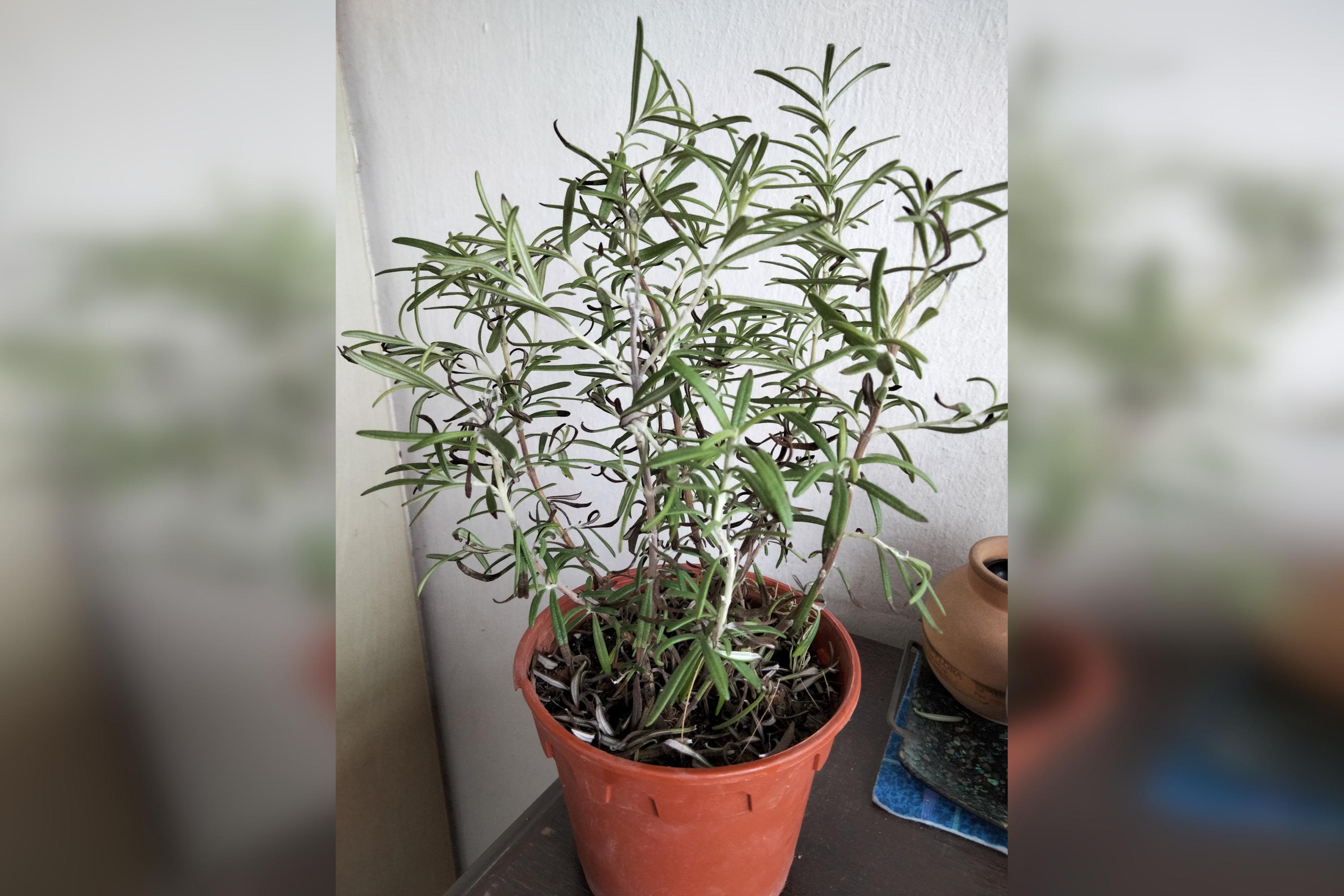
A reader's rosemary plant was growing well until recently, when the leaves began to turn black.
PHOTO: ELENA CHAN
Follow topic:
Rosemary needs direct sunlight, does not like wet feet
A few weeks ago, my sister bought a rosemary plant. It was growing well until recently, when the leaves began to turn black. I water it once every three days. The plant is kept away from direct sunlight. What is the problem?
Elena Chan
Your rosemary plant (Salvia rosmarinus) likely lacks sunlight and has wet feet. To grow rosemary plants well, they need at least four hours of direct sunlight. Allow the growing medium to dry out slightly before watering again.
A lack of sunlight worsens a plant's health and makes it more prone to diseases. Most of the rosemary plants sold locally are imported and produced in coco peat growing media, which can retain a lot of moisture.
A lack of sunlight also reduces the need for the plant to take up water and slows the rate of evaporation. As a result, the plant experiences constant wet feet, which can cause the roots to die and the plant to be infected by soil-borne disease.
Curry Tree infested with mealy bugs
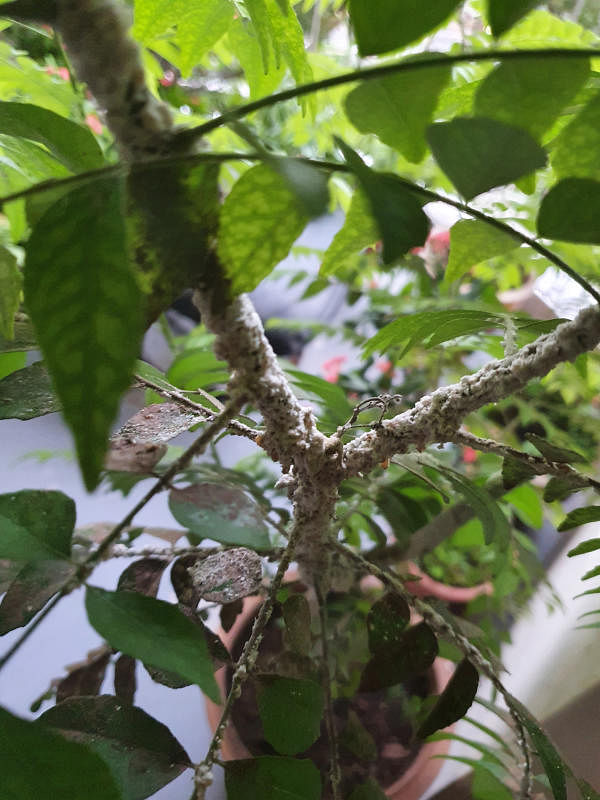
My curry leaf plant seems to be growing beautifully, but there is a white growth on it. Is this something to worry about?
Paul Raymond
Your curry tree (Murraya koenigii) is badly infested with numerous mealy bugs, which are sap-sucking pests.
Use a soft toothbrush to remove them. Then apply summer oil, which is an environmentally friendly pesticide commonly sold in local nurseries, to manage the remaining pests. Summer oil removes the white wax found on the mealy bugs and suffocates them.
You need thorough pesticide coverage on all parts of the plant. Repeated applications may be needed to eradicate all subsequent generations of the pests.
Money plant may have been overfertilised or infected with disease
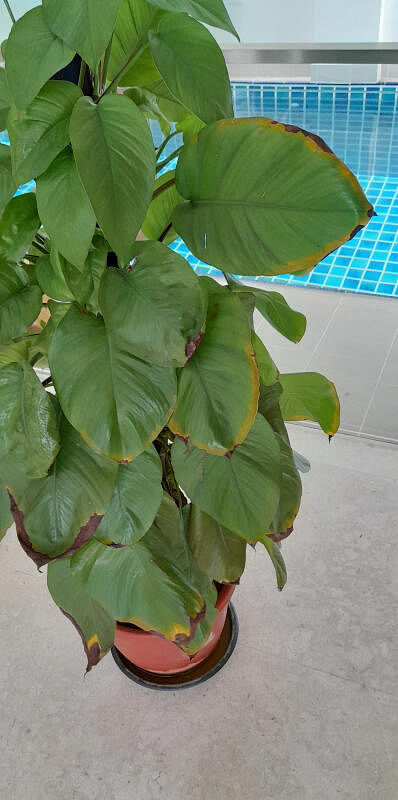
The leaves of my money plant, which is grown indoors, are turning yellowish with black edges. What is the cause and what can I do to save the plant?
Wong Kai Sang
The black edges on the leaves of the money plant (Epipremnum aureum) could be due to several reasons.
Did you recently apply fertiliser on the leaves? Excessive fertiliser can cause the leaves to burn. Flush away the fertiliser with water to reduce further damage to the plant.
Another possible reason for the black edges is a lack of water. The money plant needs a moist growing medium. It should not be allowed to dry out and wilt. Extreme moisture stress can damage the plant.
Finally, ensure that the plant is grown under optimal conditions - namely, filtered sunlight for about four to six hours daily with good air circulation.
Unhealthy plants are prone to disease and infection if they are grown in a moist area with low light and poor circulation.
Eggplant may lack potassium
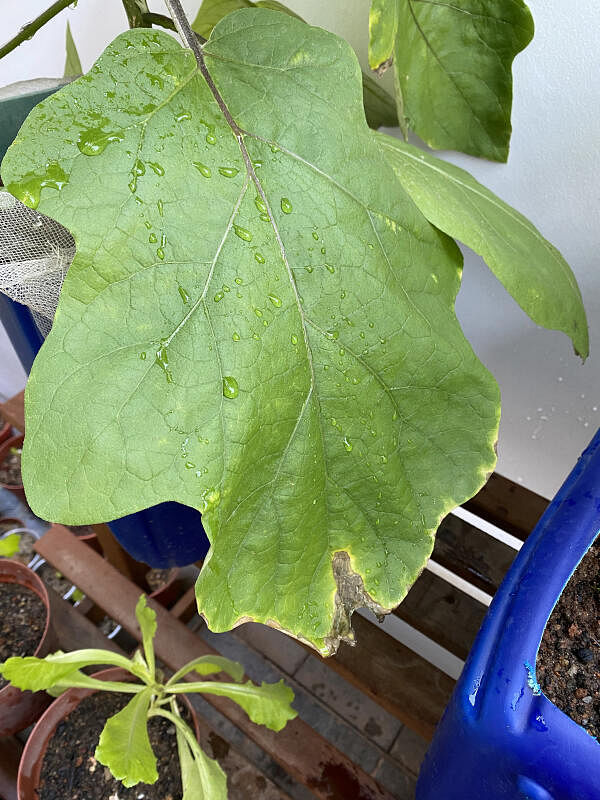
Why do the leaves of my eggplant have yellow edges? Some of them look burnt. What can I do to resolve the issue?
Lee Bee Wah
Your brinjal plant (Solanum melongena) seems to lack potassium. Potassium deficiency is a plant disorder that starts in older leaves and gradually progresses to younger leaves. The leaf edge turns yellow, leading to interveinal scorching and necrosis from the leaf's edge to the midrib as deficiency progresses. The yellowing - or chlorosis - is irreversible even if the plant receives potassium.
This issue is common if the plant is grown in well-drained soil, as water-soluble potassium ions are easily leached from growing media.
To aid the retention of potassium, add organic matter to your plant's growing medium. Feeding plants with a fertiliser that has more potassium and contains magnesium (higher K ratio with magnesium oxide or MgO, as indicated on the product label) can help to reduce the likelihood of the issue recurring.
Fruit of the Ambay pumpwood not commonly eaten in Singapore
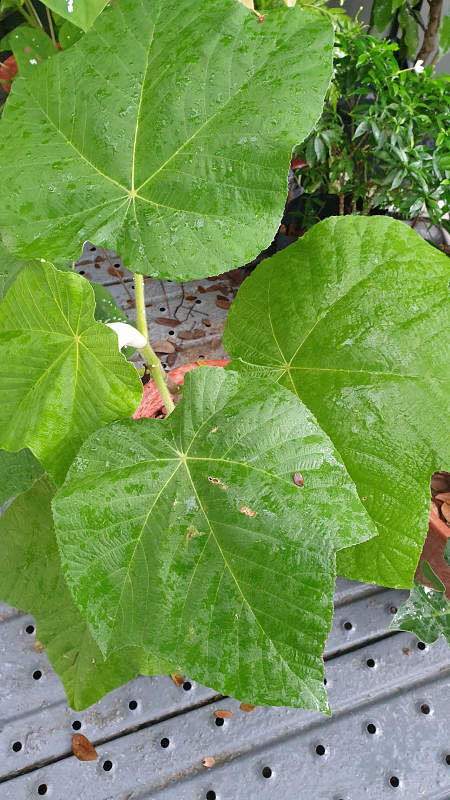
I saw this large-leafed plant in an old housing estate. What is it and how big will it grow? Is it a fruit-bearing tree and are the fruit edible?
Phang Jenny
The plant is commonly known as Ambay pumpwood and its botanical name is Cecropia pachystachya. This one is still a young plant, but it can grow into a large tree more than 10m high.
It is considered an exotic, undesirable plant species that can be found in sunny sites at the edges of forests or open wastelands.
The trees are dioecious, meaning that each tree bears either male or female flowers. You need both sexes to be planted in your garden to produce fruit.
The numerous small fruit, produced in bunches, are reported to be eaten in its native range in South America, but are not normally consumed in Singapore.
- Answers by Dr Wilson Wong, an NParks-certified practising horticulturist, parks manager and ISA-certified arborist. He is the founder of Green Culture Singapore and an adjunct assistant professor (Food Science & Technology) at the National University of Singapore.
- Have a gardening query? E-mail it with clear, high-resolution pictures of at least 1MB, if any, and your full name to stlife@sph.com.sg. We reserve the right to edit and reject questions.

